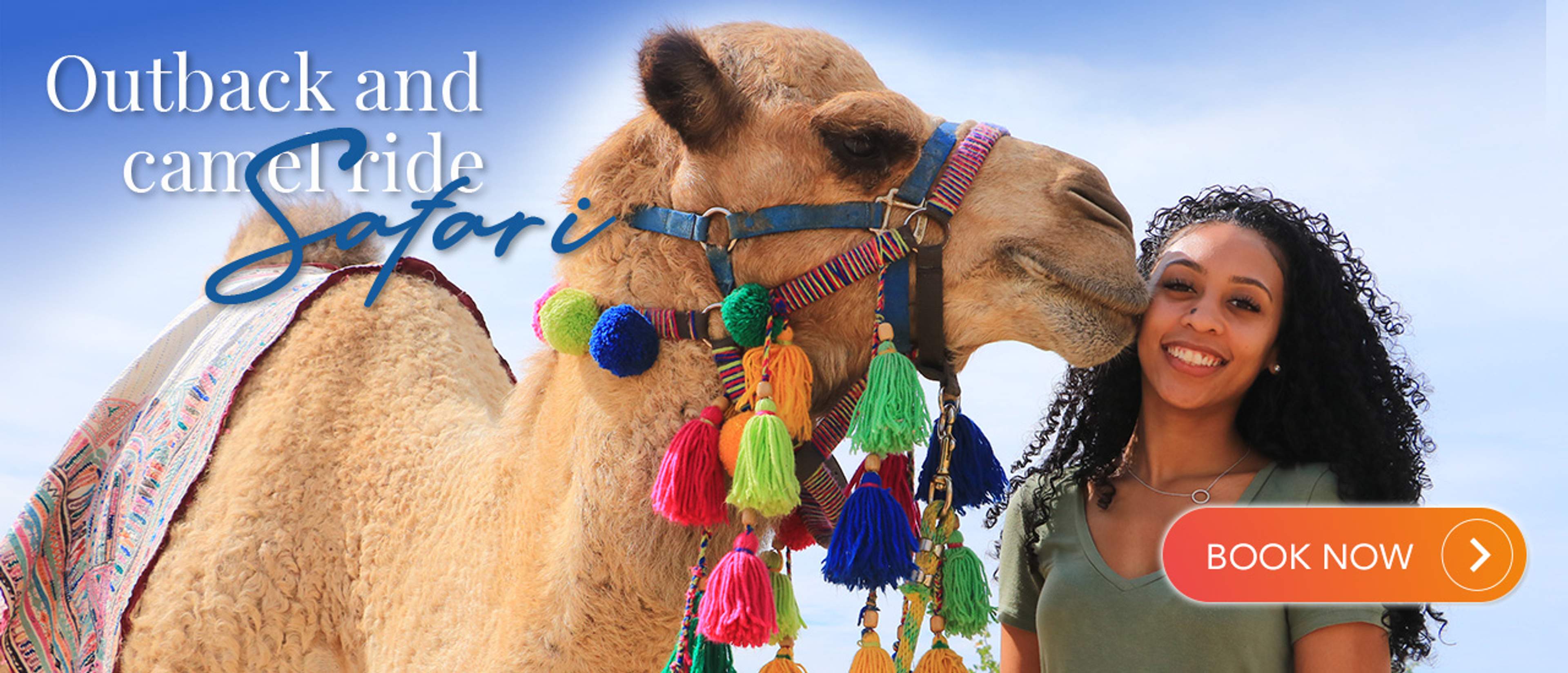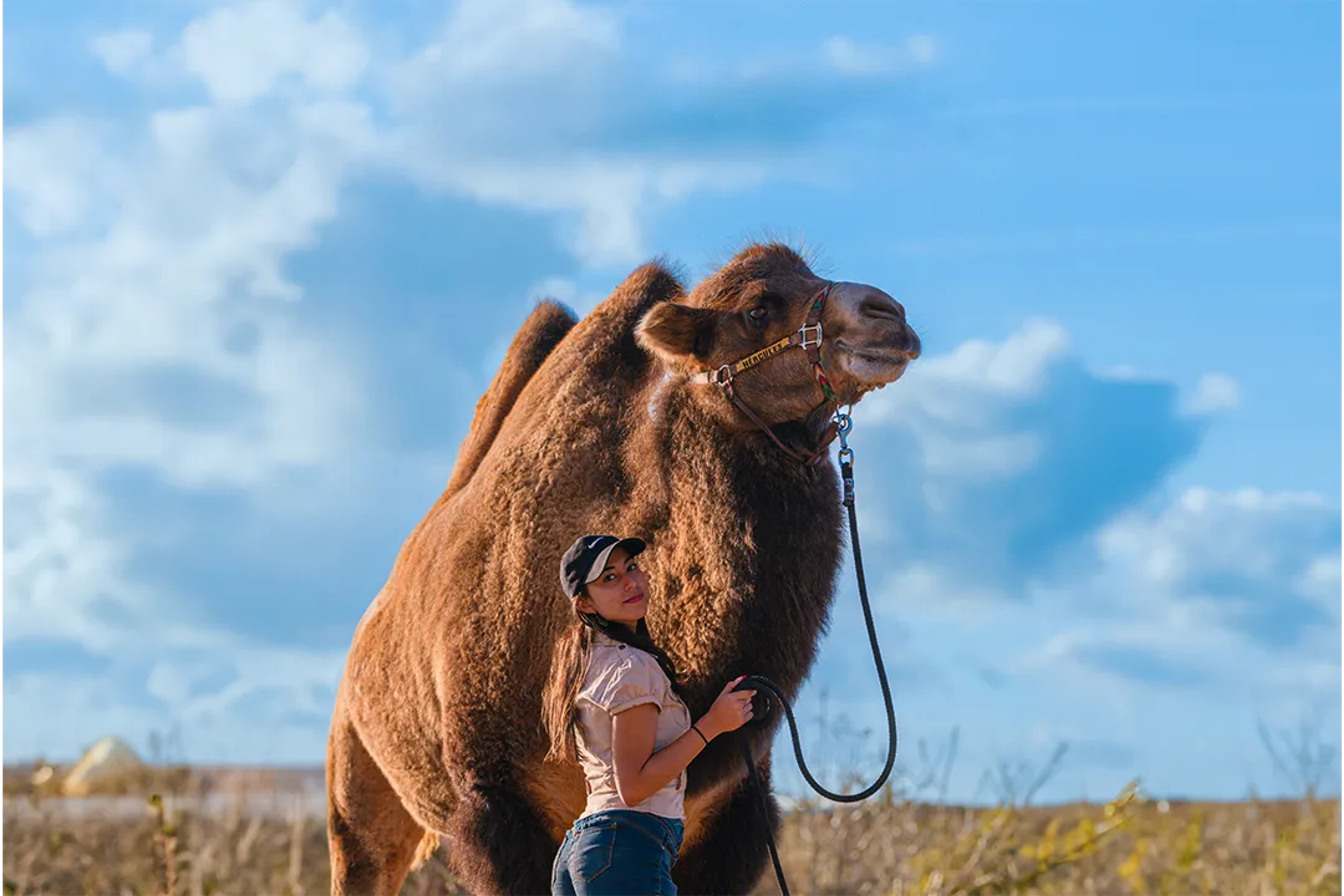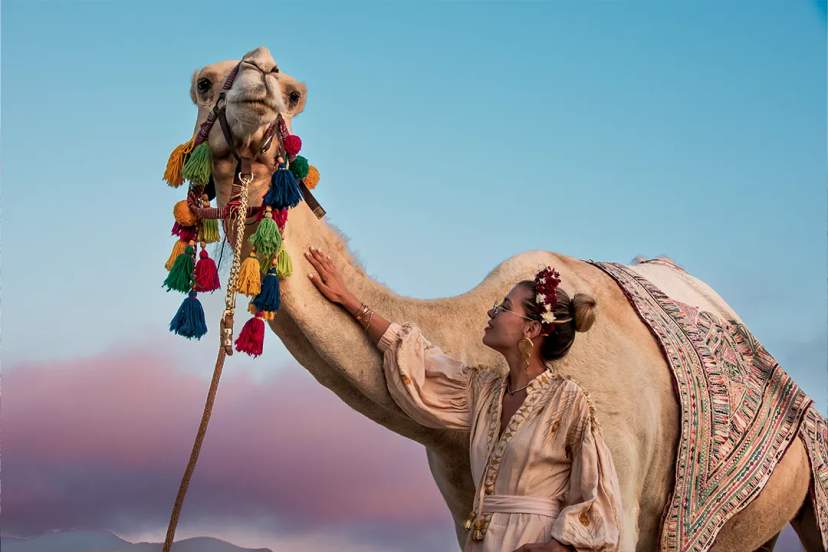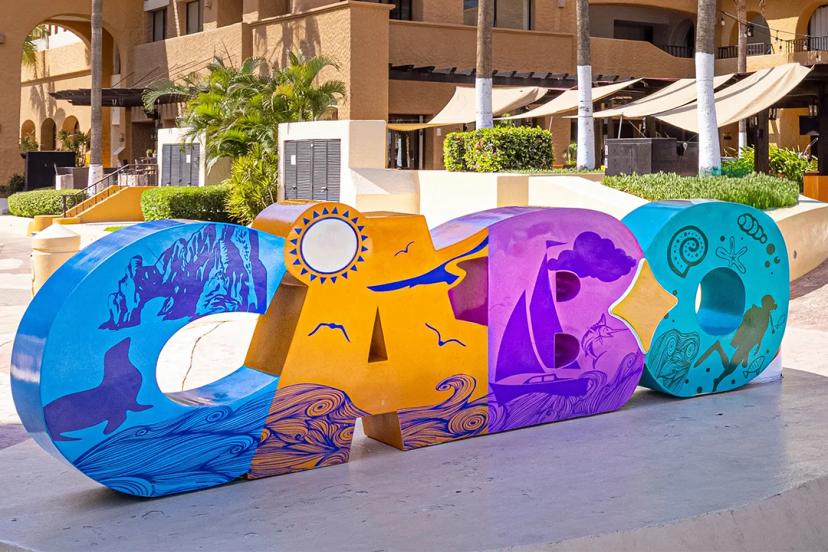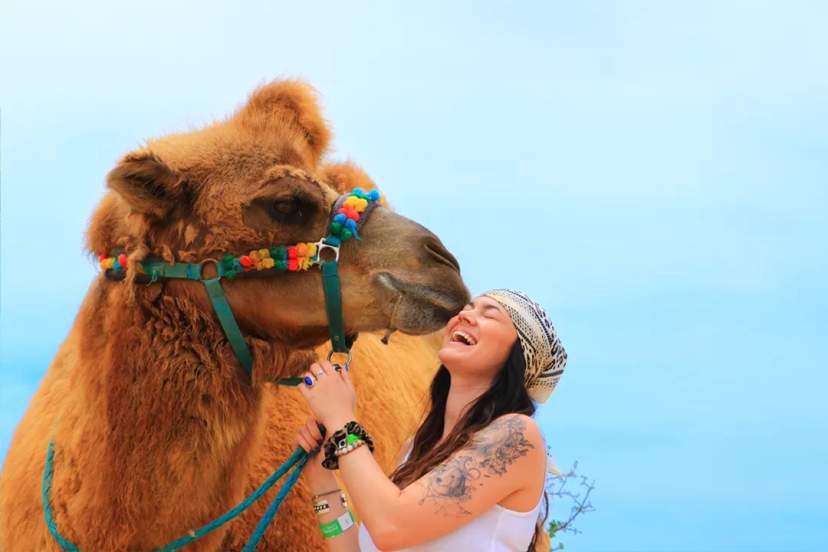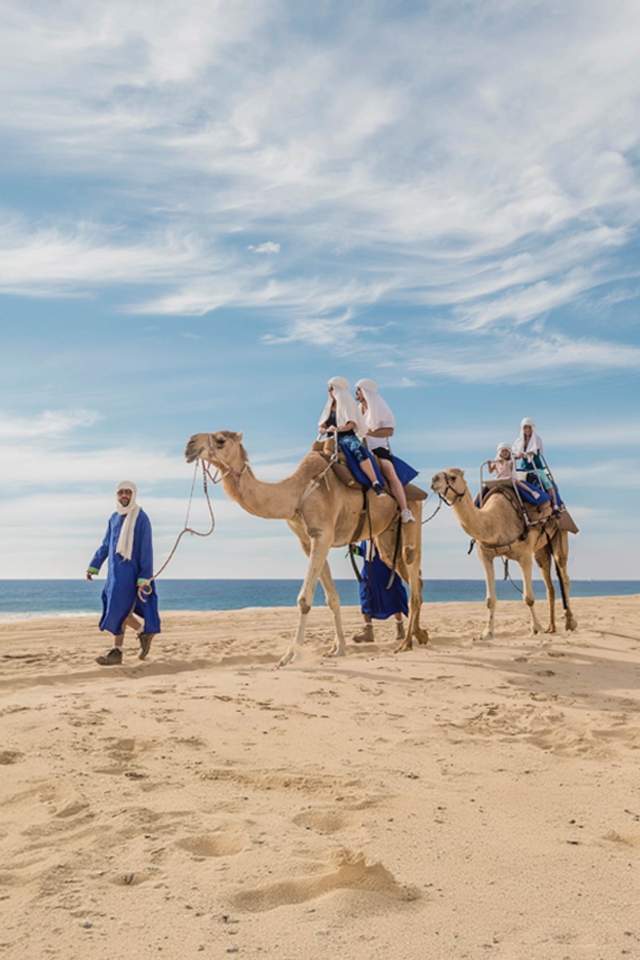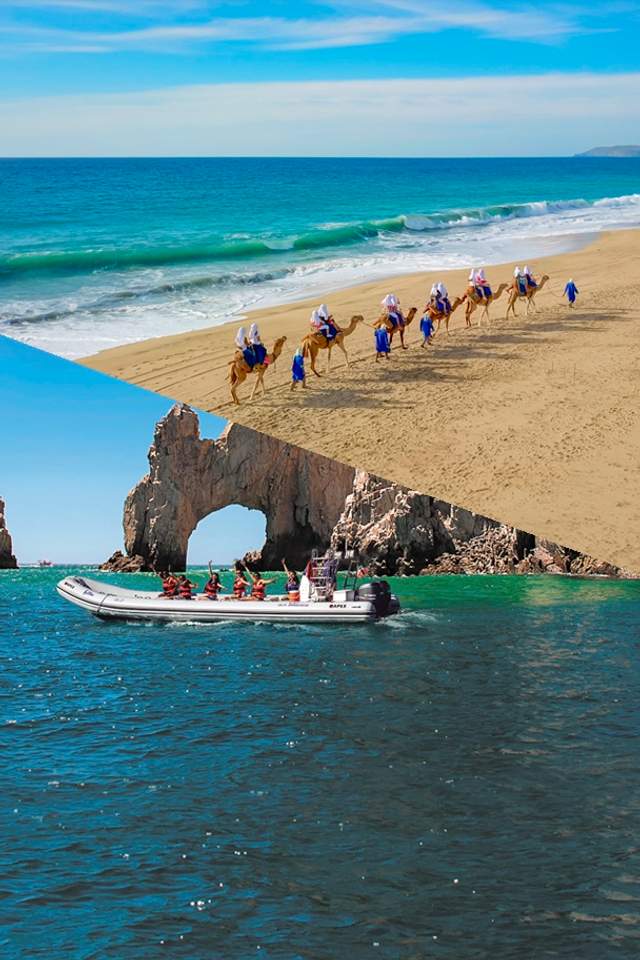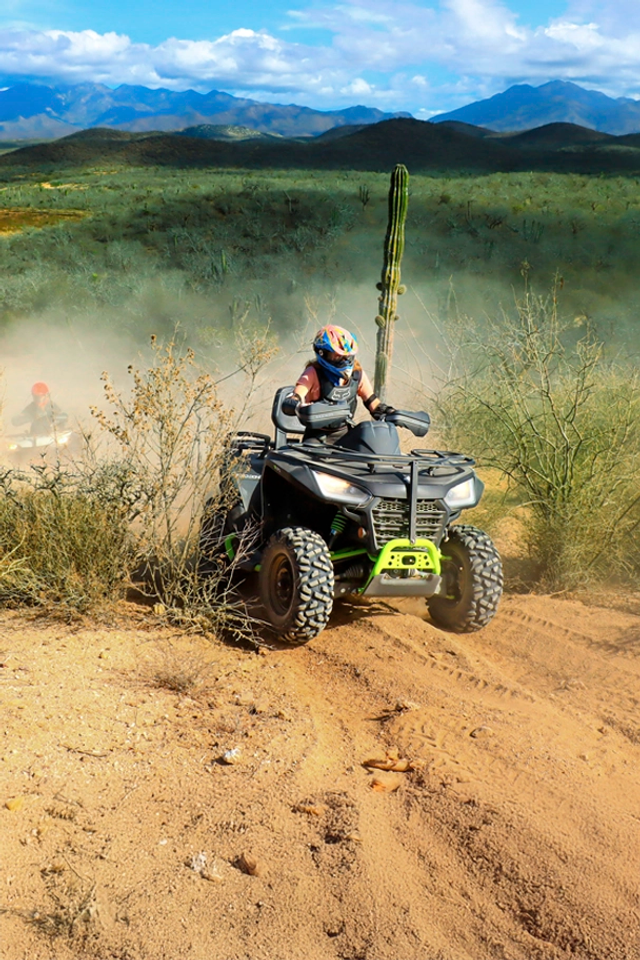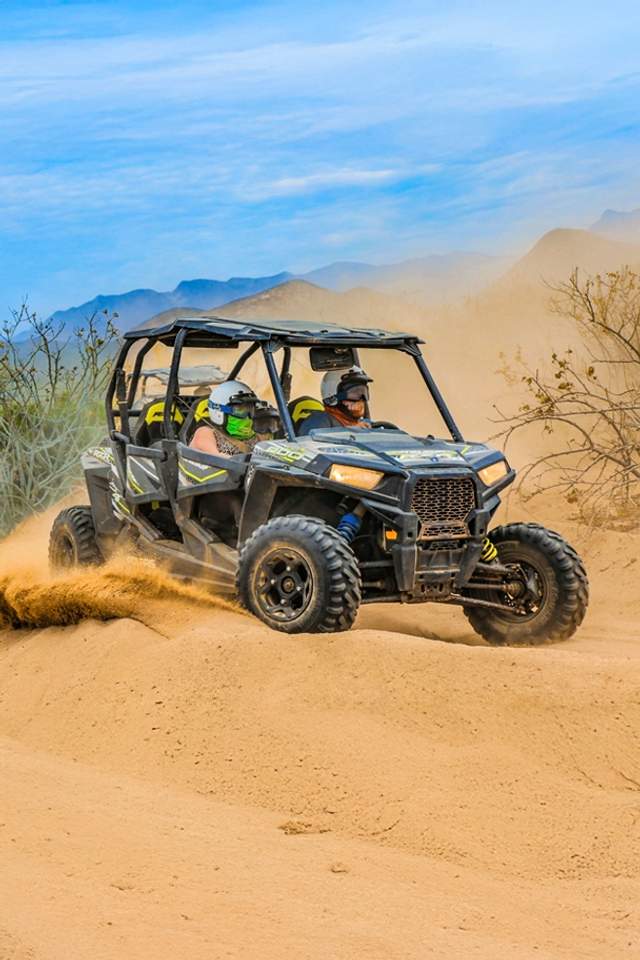Camels are an iconic image of the Sahara Desert. But did you know that camels also make their homes in Cabo San Lucas? Find out fun facts about camels.
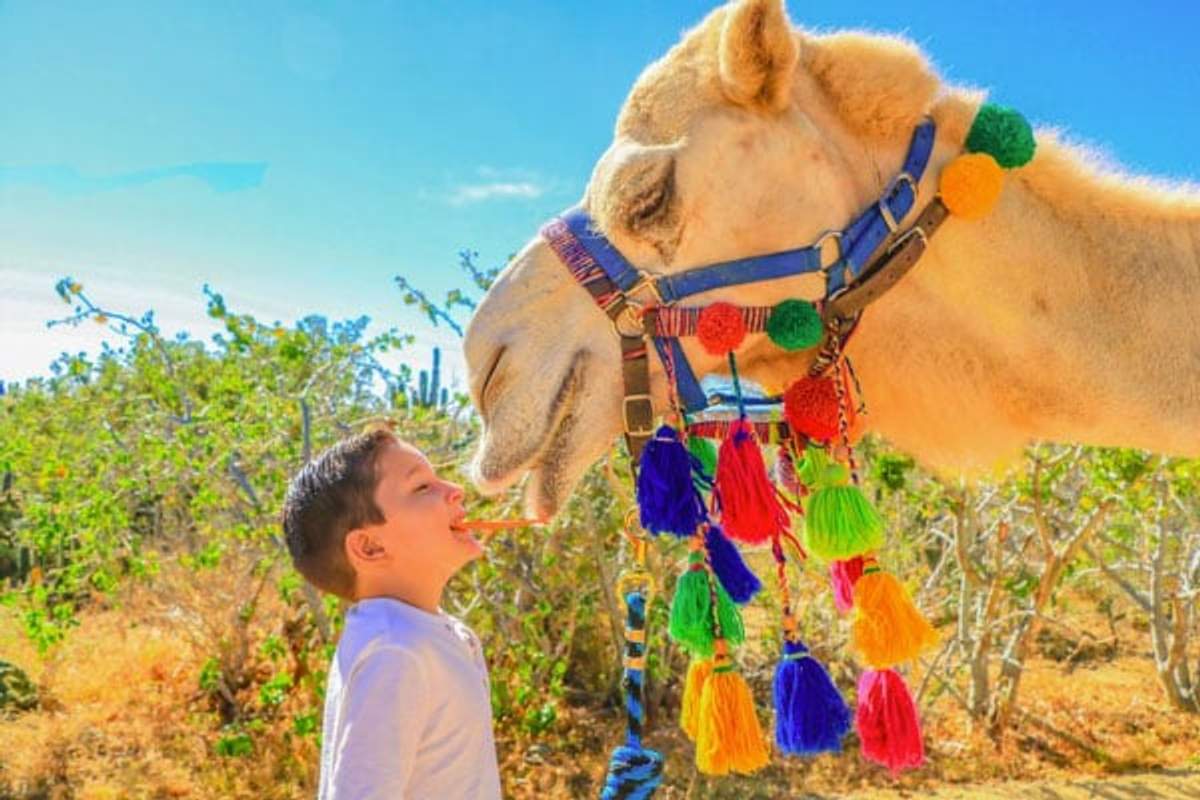
Camels are an iconic image of the red North African sands of the Sahara Desert. But did you know that camels also make their homes in Cabo? Cabo’s surrounding Baja Desert is the same latitude as the Sahara, with a similar climate, making it a great home for camels. Camels are gentle and friendly creatures. Most people don’t get much of a chance to interact with them, so they might have many questions about this interesting creature, including what types of camels there are and what do camels eat. Let’s take a look at some fun facts about camels.
Camel Facts
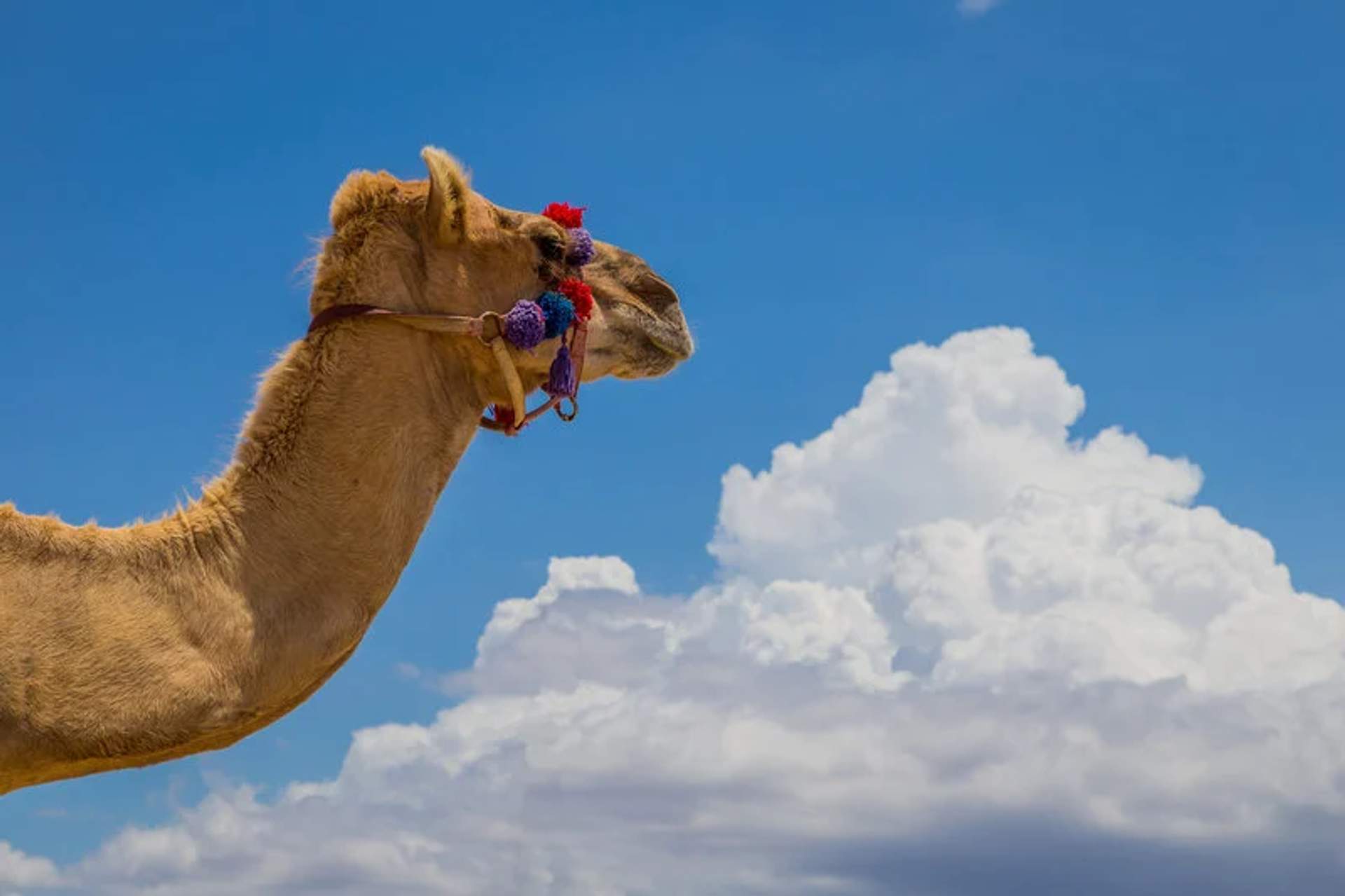
The word “camel” comes from the Arabic word for “beautiful.” While beauty might not be the first thing that comes to mind when you think about a camel, there’s much to admire and appreciate about these animals. Camels are native to Africa, the Middle East, and Asia, where they have been used for centuries as work animals to carry people and gear through the desert. They can carry up to 600 lbs, run up to 25 miles an hour and have earned the nickname of “ships of the desert.” At birth they weigh between 57 to 100 lbs and an adult can reach up to 2500 lbs. And interestingly enough, a camel’s gestation period lasts 13-14 months and a single calf is born without a hump.
Populations of camels have been introduced to other parts of the world, including North America. Even though they appear very slow and laid back, camels are social creatures. They interact well with people and prefer to live in groups of other camels. Wild camels work together when looking for food.
What Are the Different Types of Camels?
All camels are sandy colored with long legs, big lips and a snout, and a distinctive humped back. There are two types of camels: Bactrian camels and Dromedary camels. They are very similar, except for one difference: Dromedary camels have one hump, while Bactrian camels have two humps.
Camels are native to desert environments, including the Sahara Desert. They have adapted to the harsh, hot and arid environment in several ways. They have three eyelids—one of them is clear, and comes up over the eye to protect it from sand and sand storms. Camel eyes are also protected from the sand with two rows of thick eyelashes. And they can shut their nostrils during sandstorms to protect from getting sand up their snouts. Their thick fur protects them from the sun, and their bodies have adapted to use water very efficiently.
What Do Camels Eat?
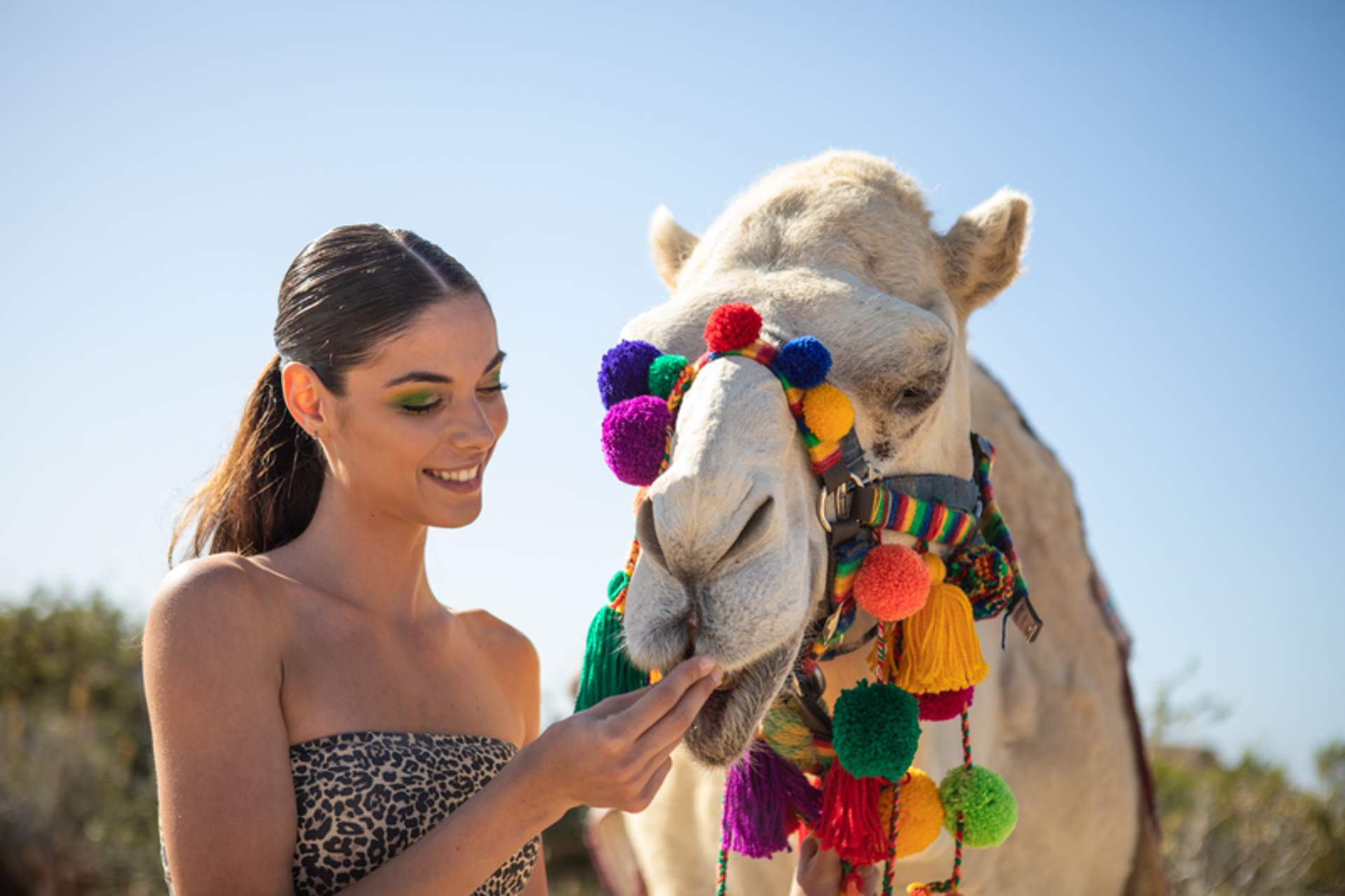
Camels are definitely not picky eaters, which is a good trait as food and water can be scarce in the desert. Typically, camels are fed grass, grains, wheat, and oats. When food is scarce in the desert, camels can survive on dried leaves and seeds, and they will even eat leather. Camels can also eat thorny plants without getting injured, thanks to their thick lips and their 34 teeth. Their stomachs are also divided into three compartments to help them digest this unique diet. One thing you won’t catch them eating, though, is meat—camels are herbivores.
Do Camels Sleep?
Camels do sleep. They actually can sleep standing up, which helps keep them safe from predators. They sleep about six hours per night, and can withstand major temperature changes from the sweltering heat of the day to the cold desert nights. Wild camels roam for food at night and rest during the hot day.
What’s with the Hump?
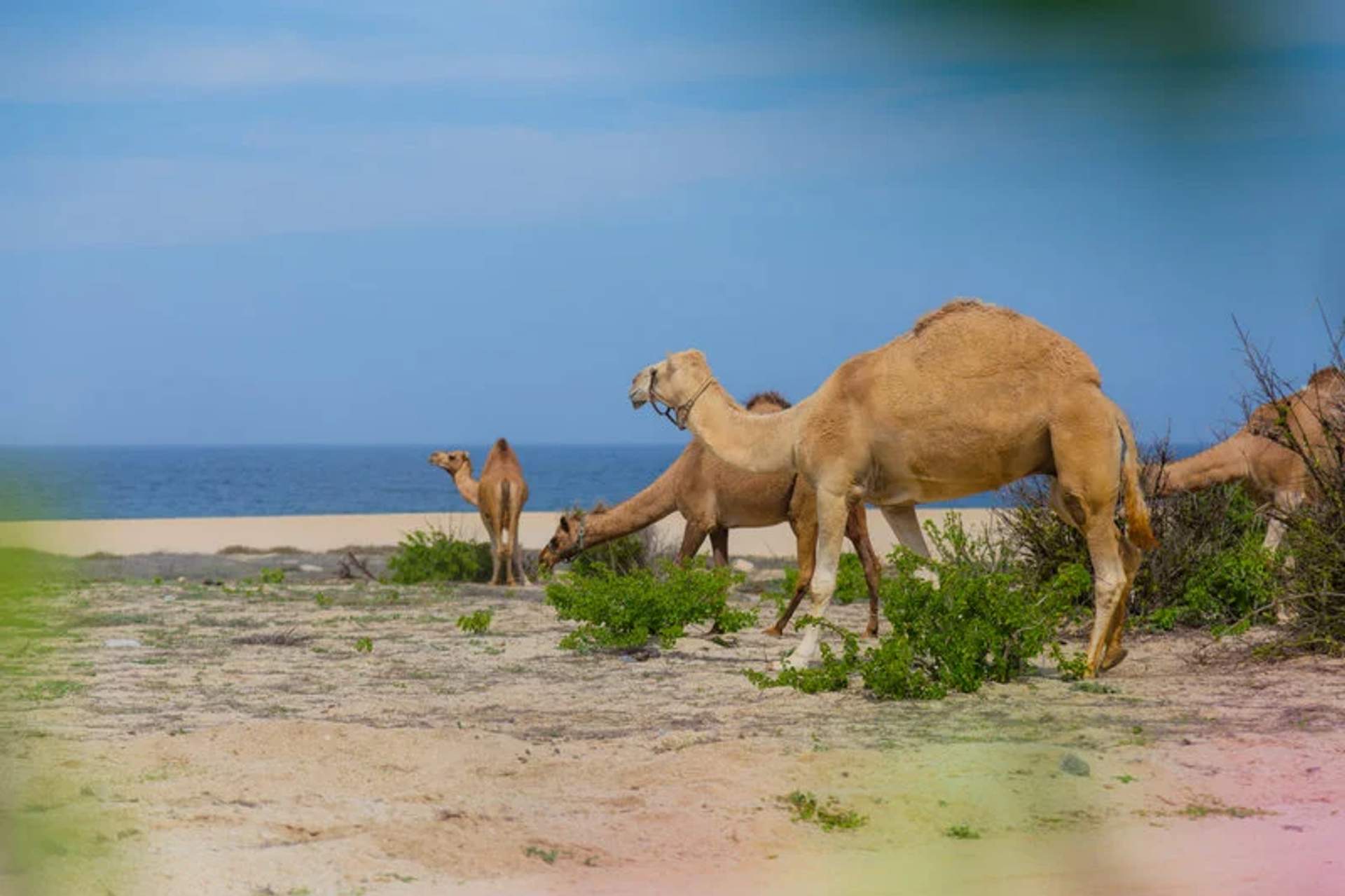
One of the most distinctive features about camels is the one or two humps on their backs. A common myth is that the hump stores water—instead, the hump stores fat, which is metabolized when food is scarce. In fact, a camel hump is 99% body fat to be precise. And Camels can actually survive up to six months without food or water, thanks to their humps. When food and water are available, camels eat and drink large amounts to store up for leaner times.
Camel Rides in Cabo
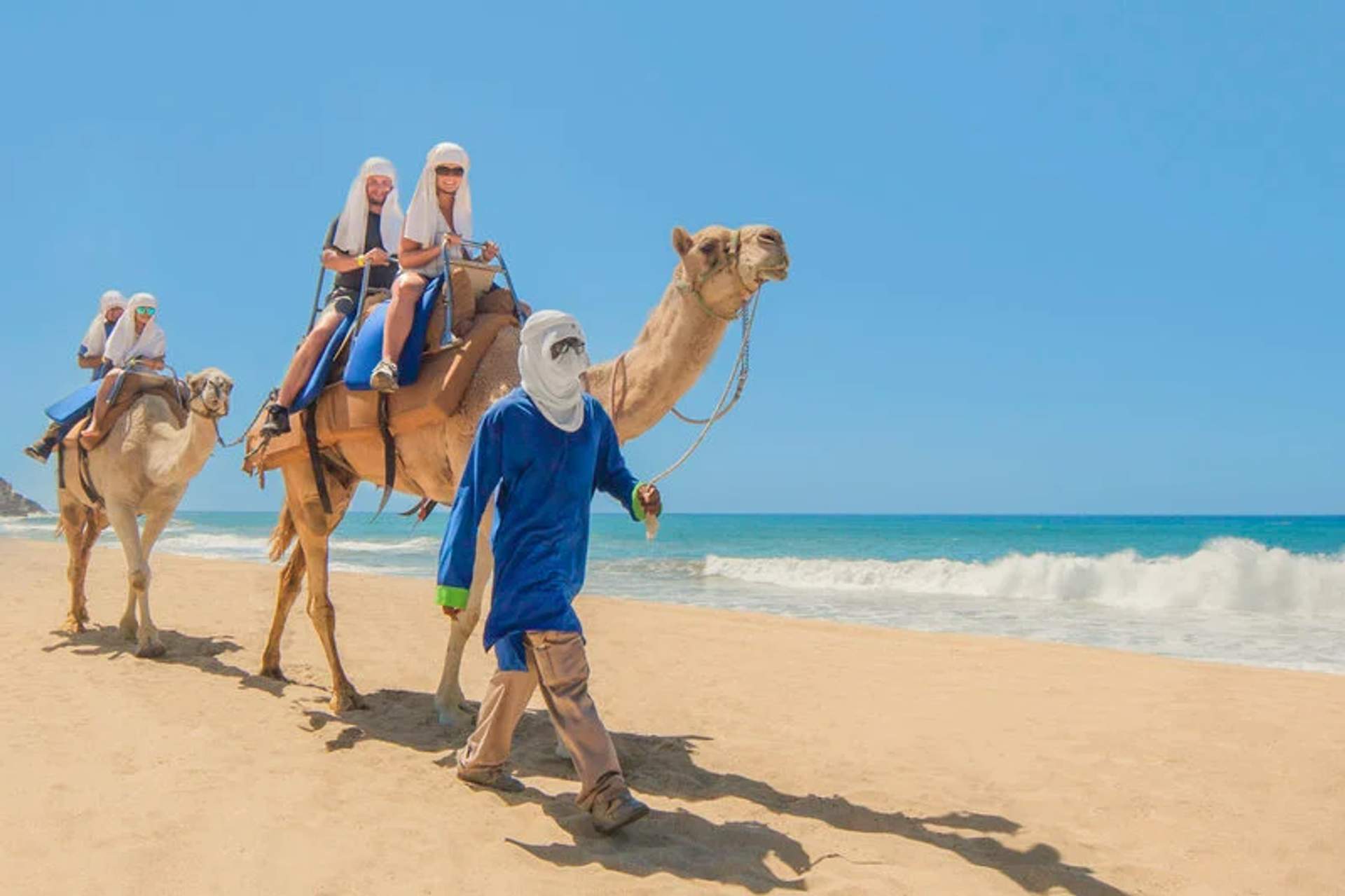
There’s no need to travel to Africa to see a camel up close—you can get some great facetime with this interesting creature on your vacation to Cabo San Lucas. Cabo Adventures offers a memorable Outback and Camel Ride Safari that will take you through the beautiful Baja desert atop a camel.
Have these camel facts made you excited to meet one of these creatures in person? Book the Outback Camel Safari tour today!
